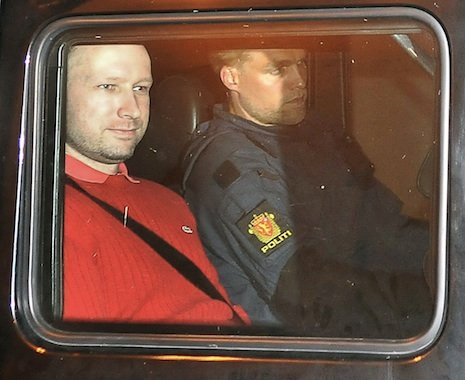
Norwegian mass killer Anders Behring Breivik has been found sane enough to face trial and a jail term after a second psychiatric evaluation.
The findings contradict a previous evaluation, published in November, that found him legally insane.
Anders Breivik, 33, is due to stand trial on Monday over a bomb attack and shooting spree last July that killed 77 people.
He insists he is mentally stable and was “pleased” with the new assessment, his lawyer said.
Geir Lippestad told reporters his client would defend his actions during his 10-week trial, adding, “he will also regret that he didn’t go further”.
Both reports will be considered by the court when it decides, at the end of the trial, whether he should be sent to a psychiatric ward or jail.
If Anders Breivik is deemed to have been sane at the time of the killings then he could face 21 years in prison with the potential for indefinite extensions to his term as long as he is considered a danger to the public.

The second evaluation was approved by a court in January following widespread criticism of last year’s assessment that concluded he was psychotic at the time of the attacks and diagnosed him as a paranoid schizophrenic – meaning he would most likely be detained in psychiatric care.
Many of his surviving victims believed he was sane, and that the only proper punishment would be a prison sentence.
“Our conclusion is that he was not psychotic at the time of the actions of terrorism and he is not psychotic now,” psychiatrist Terje Toerrissen, who carried out the second assessment with fellow psychiatrist Agnar Aspaas, told the Associated Press.
The full report is confidential, and the two psychiatrists will give their reasons for arriving at a different conclusion to the first team of experts when they testify during the trial, AP reports.
Anders Breivik was charged with terror offences last month.
Prosecutors said at the time they were prepared to accept that he was criminally insane and would therefore seek compulsory psychiatric care, but they reserved the right to alter that view if new elements emerged about his mental health.
Anders Breivik has always admitted carrying out the attacks, saying they were an atrocious but necessary part of a “crusade” against multi-culturalism and Islam. He denies charges of terrorism.
In a recent letter to Norwegian tabloid Verdans Gang, Anders Breivik said being sent to a psychiatric ward would be a “fate worse than death”.
“To send a political activist to an asylum is more sadistic and more evil than killing him!” he wrote.
The attacks on July 22, 2011, were the worst act of violence Norway has seen since World War II, and have had a profound impact on the country.
Anders Breivik disguised himself as a police officer to plant a car bomb that exploded close to government offices in Oslo, killing eight people and wounding 209.
Still in uniform, he then drove to the island of Utoeya, where a summer youth camp of Norway’s governing Labour Party was being held.
In a shooting spree that lasted more than an hour, he killed 67 people – mostly teenagers – and wounded 33, while a further two people died falling or drowning.
According to prosecutors, nearly 900 people were affected by the two attacks – 325 in Oslo and 564 on Utoeya.
• Eight people killed and 209 injured by bomb in Oslo
• 69 people killed on Utoeya, of them 34 aged between 14 and 17
• 33 injured on Utoeya
• Nearly 900 people affected by attacks